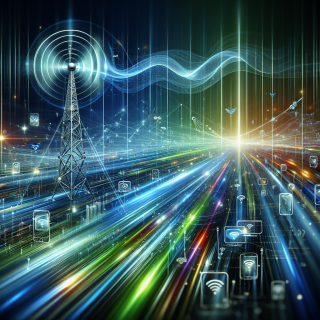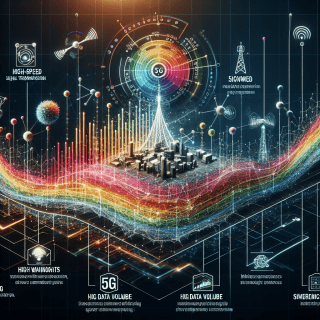How 5G Technology Enhances the Internet of Things (IoT)
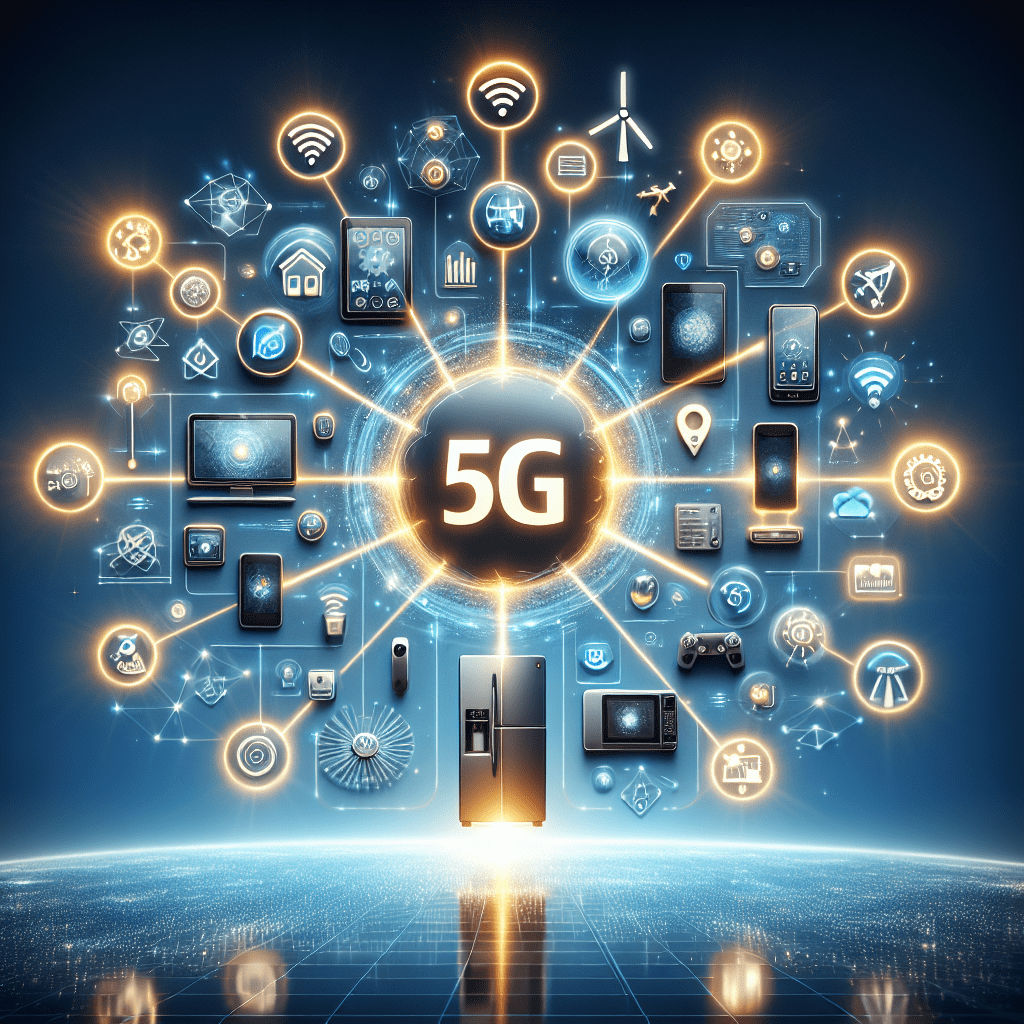
5G technology represents a major step forward in the development of wireless communication, and its introduction has raised key implications for the Internet of Things (IoT). 5G is 5th generation mobile network technology, specially designed to support even more ultra fast internet speed, ultra low latency & ultra high scalability of connections at a time. And this will pave the way for the future of IoT by making sure that smart devices can easily chat with one another. These real-time data transmission capabilities are necessary for high performance IoT applications like smart homes, connected cars, and industrial automation and the amplified bandwidth available in the 5G space will open up opportunities that were not previously possible. In addition, the strength and stability of 5G networks means that IoT systems work more effectively and are more resilient. Essentially, 5G is the driver for this massive uptake and integration of IoT because it is what enables smarter, more connected worlds which in turn revolutionises industries and life in general.
Understanding 5G Technology
5G technology is expected to transform the Internet of Things (IoT), meaning it needs to be understood. 5G, a fifth-generation wireless technology, delivers dramatically higher data rates, greatly reduced latency, and more connectivity than the preceding technologies. It works on low, mid, and also high-band spectrums which allow you to do multiple things. Low-band for wide coverage, mid-band for a balance between speed and range, and millimeter wave (high-band) for ultra-fast speeds in a small area.
Increased capacity by 5G enables billions of devices to be interconnected, part of the flourishing IoT ecosystem. The system, likewise, reduces latency down to milliseconds, which is a critical feature for real-time communication and critical IoT implementations — such as those in autonomous vehicles, smart grids, and industrial automation. 5G network slicing, however, allows traffic isolation and creates logical networks for various IoT services to ensure they perform optimally and securely without compromise on performance needed to meet specific needs of a given service. At its core, 5G enables an IoT ecosystem that is faster, leaner, and broader in its reach.
Definition and key features of 5G
5G, the fifth generation of cellular, is designed to exceed 4G with faster speeds, lower latency and increased connectivity.=”Better than 4G)!= true! With data transfer rates of up to 100 Gbps, 5G is a vast improvement on 4G in regards to peak speeds and can handle 1million devices per square kilometer. This omnipresence of network is a key backbone for the ever expanding Internet of Things (IoT) ecosystem meshing together billions of connected devices with unified communication.
Some of the key features associated with 5G are URLLC, mMTC, and eMBB. URLCC guarantees a delay lower than round-trip time (RTT) which is important for real-time applications such as remote surgery and autonomous driving. The extremely large number of IoT devices are supported by MMTC to enable efficient and consistent data communication. Furthermore, eMBB offers more throughput to respond to higher capacity demands and increase user experience such as video streaming and augmented reality.
With these more advanced features in place, 5G enables IoT devices to operate more scalably and efficiently, which innovation within healthcare, manufacturing, and smart cities, among other industries.
Comparison with previous generations (3G, 4G)
5G makes the internet of things (IoT) better than its predecessors, 3G and 4G, because as opposed to the speed of those previous systems 5G is one hundred times faster. Which makes real-time conversation between devices possible, which is very important in sectors such as self driving cars or smartcity infrastructure. 5G technology also has ultra-low latency which means latency times are cut down from an average of around 50 milliseconds on 4G to as little as 1 millisecond on 5G. This is important for mission-critical applications like remote surgery and industrial automation applications.
It has also significantly increased device capacity, which is now a one-million-device-per-square-kilometer for 5G versus the ~100,000 for 4G. This scalability is critical for the wide-scale rate of growth IoT ecosystems will demand, as hundreds of sensors, devices, and applications can be used with minimal effort. Moreover, 5G also offers improved energy efficiency, network reliability, affordable IoT deployments that are sustainable and reliable, and this leads us to a smarter and a more interconnected world.
The role of 5G in future technological advancements
5G place within the new era of technology is transformational and that is especially the case in the future with the potential of the Internet of Things (IoT). 5G technology is characterized by high speed and ultra-low latency, which empowers real-time communication of multitude of IoT devices for smart cities, industrial automation, and healthcare services. Fast, high-throughput data connections make it easier to integrate and control devices in more complex applications, including autonomous vehicles and remote surgery. What’s more, its capability of servicing tens of thousands of connections per square kilometer ensures that emerging IoT ecosystems can grow efficiently, without hitting any bottlenecks This widespread connectivity will facilitate artificial intelligence and machine learning improvements for more intelligent, more adaptive systems that can react to new conditions in real-time. In essence, 5G is more than a speed upgrade – it is an enabling technology that will pave the way for an entirely new suite of interconnected, intelligent, and autonomous services in multiple industries.
The IoT Ecosystem: Current Status
The current reality of the Internet of Things (IoT) ecosystem includes a large network of interconnected devices that communicate and share data with the primary purpose to improve a number of applications. These things include all types of consumer devices like smart home appliances, to complex industrial systems in the sectors of health and life science, manufacturing or agriculture. The current IoT landscape has grown rapidly over the years thanks to sensor technology improvements, cloud and edge computing, but there are still several challenges the industry has yet to solve, such as latency, bandwidth limitations, network reliability issues, among many others. Current installment of 4G LTE networks are enabling a lot of business cases related to IoT, mainly sending basic data and remote control. However, these networks are under growing strain, given the rapid proliferation of echoey things. The shift to 5G technology — a technology on which the IoT largely depends — is predicted to overcome these obstacles through more extensive bandwidth, lower latency, and vastly enhanced capacity, facilitating a more resilient, effective and creative IoT ecosystem.
Overview of IoT devices and their applications
The defining Neuroplasticity Newsletter The Internet of Things (IoT) is a giant network of connected objects, of sensors and it allows the collection and exchange of data. IoT devices from everyday household appliances such as smart thermostats, security cameras, and wearable fitness trackers, to industrial applications such as smart grid, agricultural sensors, and predictive maintenance systems. Such devices enable easy to communicate and automation, therefore, use is increasing at all the levels of the industry.
For consumers, IoT devices can save on energy usage, home security, and personal health and wellness. IoT applications for industries also drive operational efficiency, real-time asset performance, and innovation in supply chain management, healthcare, and environmental monitoring. By offering faster data transmission, less latency and fewer interruptions in the connection of millions of devices, we can integrate 5G with IoT devices, give IoT increases and create applications that are more complex and greater in scale.
Current limitations with existing networks
Having capable of performing several functionalities is a good option, however currently the bottlenecks with the existing networks actually make the true potential of Internet of Things (IoT) to somewhat stutter. As a remedy, the sentence uses traditional 3G and 4Gs serviec which face issues such as higher latency, low bandwidth and not enough capacity—spekaing to the lack of mass interconnection they can handle to-fast-growing 15 billion IoT devices in use. The limitations also cause latency and data loss problems making it more difficult to work with real-time applications, like autonomous cars, smart healthcare, or industrial automation. In other words, overcrowding such a massive number of interconnected devices in the existing networks may cause the network congestion to degenerate the performance and reduce the reliability of the existing network. There are also the issues of energy efficiency — 3G and 4G networks are not as efficient, drawing too much power to be sustainable for battery-operated IoT sensors and devices. Collectively, these limitations constrain the scalability, reliability, and responsiveness of IoT ecosystems, preventing them from realizing their full potential of enabling and having seamless, inter connected smart environments.
The need for improved connectivity and speed
The arrival of 5G meets a critical need for better connectivity and faster speeds to propel the growth of the Internet of Things (IoT) to the next level. IoT requires enormous numbers of connected devices and real-time data transmission; traditional networks cannot deliver these requirements. With its low latency and high bandwidth and with 5G technology it is possible to solve all of these drawbacks.
For example, 5G, which is 100 times faster than 4G and will facilitate instantaneous device communications. This is important for things like autonomous vehicles, remote healthcare, and smart cities, where lightning-fast data transfer could be the difference between success and disaster. Even better, 5G support more devices at a time without losing performance, support even more IoT devices (from smart home devices to industrial sensors). 5G provides the speed and connectivity that ultimately allows for a better, more productive and a more reliable overall IoT experience — otherwise known as the “smart life”.
How 5G Enhances IoT
5G technology massively improves the Internet of Things (IoT) through providing unmatched speed and quality in network connectivity. 5G operates 100x faster than 4G in terms of data which is ideal for IoT use cases since it will allow for high-speed real-time communication between IoT devices — crucial for the likes of autonomous vehicles, smart cities and industrial automation. 5G provides ultra-low latency, extending below 1 millisecond, this allows actions to take place almost instantly, resulting in increased efficiency and consistency of top critical operations. In addition, 5G supports a density of devices and a total capacity of devices per square kilometer, thereby allowing the world of IoT to come to realization on a broad scale but without the fear of network congestion. The network slicing capabilities have also been enhanced to create dedicated virtual networks that suit different IoT applications and deliver the best performance. Together, these advances help enable intelligent, more reactive and truly massive IoT deployments that will truly change the industry and the way we live.
Increased speed and bandwidth
Enhanced speed and bandwidth capabilities — Higher speed and bandwidth are one of the major benefits 5G technology is providing in the field of the Internet of Things (IoT) as well. 5G is up to 100 times faster than its predecessor, 4G, which allows IoT devices to transmit and receive data at faster rates than ever before. Applications such as autonomous vehicles, smart city infrastructure, and remote healthcare services rely upon rapid data transfer for real-time processing.
broadest possible use of the available spectrum and increases the capacity for connected devices in a particular area that can remain connected without a degradation of service. This is especially useful in IoT dense environments, with multiple types of sensors that are deployed in industrial automation systems or in dense locations such as urban regions. 5G enables reliable, fast communication between a wealth of devices, speeding up operations, reducing latency, and is helping bring in an era of innovative technology across many industries.
Lower latency and faster response times
If you want to introduce 5G to the wild, that means that the network needs to have the edge, quite literally, to send ultra-low latency, high-speed data that is the internet of things if you want to open 5G in the field, where you can do it faster. Latency is defined as the time delay between the sending and receiving information, and in case of IoT, low latency is essential for enabling real-time two way communication among connected devices. 5G can bring latency down to 1 millisecond, which is in comparison to 30-50 milliseconds enountered by 4G networks. This dramatic overhead reduction makes it possible for instant data transfer, which specifically real-time feedback and control applications like autonomous cars, remote surgery and industrial automation need.
5G provides improved efficiency by allowing IoT devices to communicate with each other more efficiently, thanks to their quick response times. This would enable smart home devices to respond to your commands with virtually no delay, enable industrial robots to be more precise and timely in their operations, and allow critical healthcare devices to deliver rapid feedback—significantly improving the overall performance and safety of IoT ecosystems.
Enhanced device capacity and connectivity
One of the biggest benefits of 5G technology for the IoT is that it will support a 100X plus devices and provides the ability to for better connectivity. 5G provides much more bandwidth than before, and it is able to support as many as a million devices per square kilometer. This is relevant to IoT ecosystems, where potentially thousands of sensors, actuators, and other smart devices are required to communicate concurrently. Additionally, 5G network slicing provides enterprise customers the means to create multiple “virtual” networks that are actually run over the same physical network, yet are isolated and tuned to different types of traffic and performance specifications. This guarantees that low latency and high reliability for crucial IoT devices can coexist seamlessly, as long as non-critical devices share the same infrastructure without experiencing performance setbacks. 5G suffers from being able to deliver reliable, ubiquitous connectivity, thus enabling a truly interconnected IoT world, particularly in the smart cities, advanced industrial automation or responsive healthcare systems.
Improved reliability and network availability
Five nines of reliability and consistent network availability are two of the ways 5G technology furthers the Internet of Things (IoT). This covers LTE, but 5G does not need such heavy systems or even the exchange of IP addresses each time a cell changes, as LTE does (or edges). Unlike LTE and what evolved to be 4G, 5G provides highly stable 100% network up time which is crucial for the proper operation of IoT devices. The technology uses sophisticated network slicing that divides a single networks into multiple virtual networks that can be customised to different requirements at scale, such as immediate data processing for autonomous vehicles or essential health monitoring systems. This will ensure that each IoT device or service gets the maximum performance it requires without being interrupted by other activities on the network. In addition, 5G coverage is further fortified by its significant deployment of millimeter waves and augmented number of small cells, leading to large gains in network capacity and reach, larger capacity translates to fewer dead zones and a more reliable connection, even in crowded urban areas. 5G promises to allow IoT devices to communicate faster and in larger quantities by providing reduced latency and improved data throughput, an improvement that is vital to IoT applications that need updating in real time and maintaining connectivity on a constant basis, thus considerably augmenting the entire IoT ecosystem.
Energy efficiency and battery life improvements for IoT devices
This helps improve the power saving and battery life management for IoT devices which was one of the major drawbacks of previous generation wireless communication technologies and the introduction of 5G technology pushes the efficiency bar even further. For data transmission process these networks use many improved advanced policies like Ultra-Reliable Low-Latency Communications (URLLC), narrowband IoT (NB-IoT). These methods minimize suffered interference and lower retransmissions, then save energy by only having to transmit data packets once more!
5G supports massive machine-type communications (mMTC), meaning an extremely high number of devices can connect with low power modes, organizations can deploy on the order of billions of IoT sensors and devices requiring long live batteries. Smart meters, wearables, health monitors and sensors for farming are examples that can last for several years on small disposable batteries. Energy efficiency is critical given that IoT is often deployed in remote or difficult-to-reach locations where replacing batteries frequently is not an option. In the big picture, these advancements in connectivity and energy optimization enabled by 5G are what will grow IoT ecosystems at a sustainable and scalable rate.
Real-World Applications and Benefits
The 5G technology supercharges the Internet of Thing (IoT) with its high-speed, low latency, and reliable connectivity offers a whole new level of real-world applications and benefits. Application traffic, energy savings, and public security allows thousands of sensors to be integrated into the systems of smart cities, transforming cities into an even more sustainable, efficient environment. The following are real-time tracking and automation related to the manufacturing method which will upgrade the production activity and reduce operational prices is licence industrial IOT can benefit from 5 G. 5G has promising implications on healthcare, which can be illustrated by the 5G-enabled remote patient monitoring, telemedicine and real-time data sharing that are associated with better patient outcomes, and more seamless healthcare delivery. 5G is also supporting the development of autonomous vehicles by ensuring vehicles can quickly send and receive data from other vehicles and also infrastructure to create safer and more efficient transportation systems. In short, 5G plays an important role in driving innovation in several industries by providing faster network connectivity, data processing, and device interactions for IoT.
Smart cities and infrastructure
Thanks to 5G technology, the vision of smart cities and infrastructure remains a key element supported, thanks to the connectivity it provides that can be designed to cater for billions of connected devices. 5G offers ultra-low latency and high data transfer speeds, which makes it easy for sensors and management systems to communicate in real time. Improving traffic management for effective traffic flow, allowing a streamlined management of the mass transit system. 5G also power advanced utility management, such as smart grids for electricity distribution, water management systems and waste disposal: 5G can greatly help in resource efficiency and sustainability.
In addition to this, 5G makes it possible to benefit from services of advanced cities with a higher level of public security through constant video surveillance and immediate emergency response capabilities. Typically, these systems have found a seed application in smart buildings by offering more advanced energy management systems, climate control, climate systems, response to internal and external usage patterns. At the end of the day, the resilient, high-capacity connections of 5G is the durable and flexible foundation that future-proof urban ecosystems need in order to evolve into more liveable, workable, and sustainable cities.
Healthcare and remote monitoring
Healthcare: 5G technology has the potential to dramatically improve healthcare and remote monitoring, which can also be a boon for patient care and for the overall proficiency of ops. 5G has ultra low latency and is high-speed enabled in real-time data transmission between patients and healthcare providers. If wearables and medical-grade sensors allow clinicians to measure heart rate, blood pressure, and glucose levels in real time so that they can respond immediately — then they can react in real time. This feature is incredibly important for care of chronic conditions, early detection of potential health issues and supporting emergency response systems.
Telemedicine, for example, can benefit significantly from 5G through seamless, high-quality video consultations across long distances where geographical barriers would otherwise impede access to active healthcare, particularly in remote or underserved locales. In addition, it enables use of sophisticated futuristic technologies such as augmented reality (AR) and virtual reality (VR) for remote surgeries, and treatments, which in turn helps in extending the availability of specialized medical proffers. In the end, 5G connectivity with devices in the healthcare IoT regions for more proactive, efficient and patient-centered medical care.
Industrial IoT and automation
Key factors associated with 5G include transforming Industrial IoT (IIoT), and automation, by allowing ultra-reliable, low-latency communication, and massive network capacity for reliably handling almost an unlimited number of connected devices. Not like 5G are the upper switch pace and barely no latency of the sooner predictions imply proper time information transmission very important for business packages that want to have an elemental response at any signal. The flexible connectivity enables better remote monitoring, predictive maintenance, and control of industrial equipment and processes.
5G networks also enable a high density of IoT devices per unit area, which is especially important in factory areas as many sensors and actuators may run at the same time. So, industries can now deploy things like robotic arms, autonomous guided vehicles and smart grids using advanced automation systems with the help of 5G, to automate their operations, and improve efficiency and productivity. As a result, edge computing is available via this network, which allows for the processing of data at or near the source device rather than on a central server, thus improving decision-making speed. 5G technology, in the end, helps facilitate increased cohesion, responsiveness, and mechanization in industry.
Consumer applications: smart homes and wearables
5G technology integration significantly boosts consumer applications in IoT including smart homes and wearables. This ultra-fast speed combined with low latency that characterizes 5G are also ideal for smart homes, where many connected devices talk to each other, like smart thermostats and security cameras, voice-activated assistants, and smart appliances. This provides better automation, a more agile energy management, and a higher level of security. An example of this is real-time data feeds, adding layers to home safety and convenience by providing instant security breach and broken appliance responses.
In wearables, 5G can enable smartwatches, fitness trackers, health monitors and similar devices to deliver real-time health data to users and to be connected seamlessly to other devices or health services. The broader pipeline and more nimble latencies means the data is transmitted with minimal delay, allowing the health monitoring and alerts to be of value. This level of connectivity makes sophisticated use cases, such as remote patient monitoring, telemedicine, and high-precision fitness tracking, possible and is going to change how consumers engage technology in their lives. In general, 5G greatly enhances the range of applications that can be controlled with the IoT, this will eventually help the consumer and provide them with smarter responsive consumer spaces.
Transportation and autonomous vehicles
The above 5G Technological advancement will improve the Internet of Things (IoT) significantly with special attention to transportation and autonomous car. Ultra-low latency and ultra-fast data transfer speeds in 5G allow IoT devices to communicate with each other in real-time, which is vital to an autonomous vehicle. Those vehicles depend on the constant flow of data from dozens of sensors, cameras and GPS to make decisions in split seconds. The near instantaneous data transmission that 5G enables will also result in better and safer operation of self-driving cars. Additionally, 5G networks can use enhanced mobile broadband capacity to accommodate more devices, allowing for more vehicle-to-everything (V2X) communication. This enables vehicles to communicate not just with each other, but also with traffic lights, road infrastructure and even with the people using mobile devices. It gives a wiring environment that upgrades rout management, decrease the collision and lightens the advancement for smart and efficient transport system. Hence 5G is the essential enabler in the transportation industry to realize advanced IoT applications.
So what have we concluded?
Conclusion: 5G Technology is adds a value to the Internet of Things (IoT) by overcoming the limitations of earlier-generation wireless communication. The ultra-low latency, high data rates and increased network capacity of 5G allows to easily connect a huge number of devices (smart home devices to industrial IoT systems) This internet conductive milestone allows faster real-time communication and allows the development for autonomous cars, e-Health and smart cities to go a step ahead. Accordingly, 5G paves way for innovative smarter and more responsive IoT use cases. It has potential to provide unprecedented opportunities as the technology matures and becomes more mainstream, shifting the interaction with the world to devices which are interconnected and potentially openning the door for a new generation of technological advancement and efficiency.
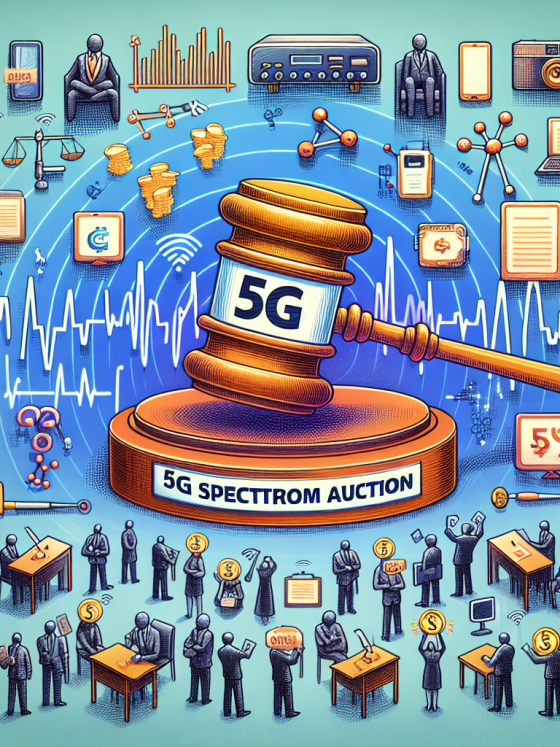
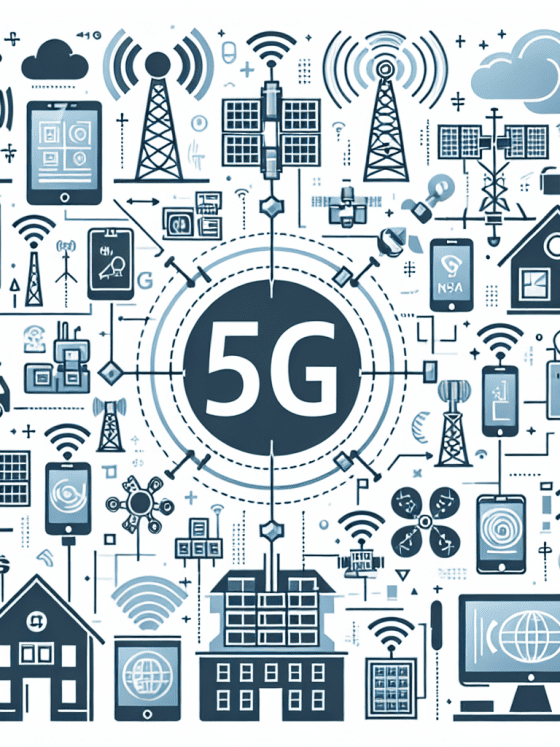
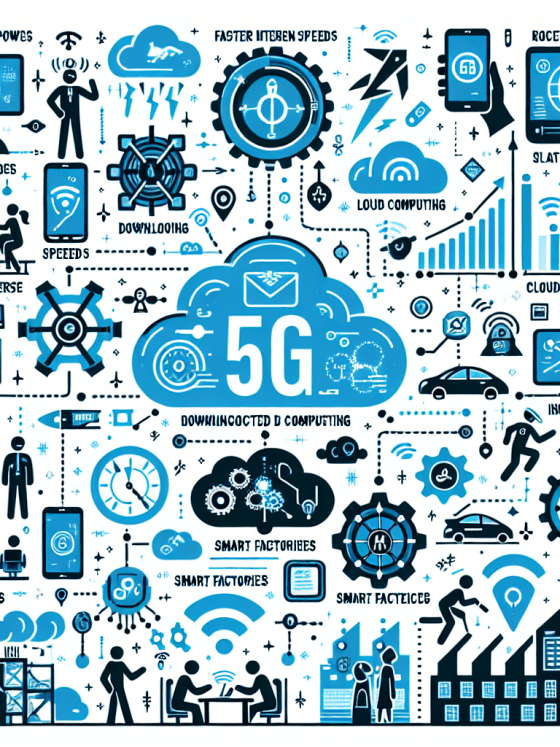
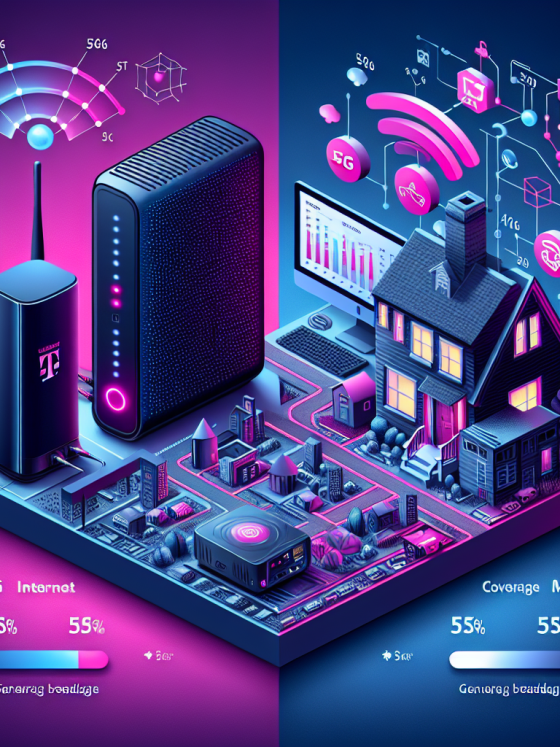
![Introduction to 5G Technology [PPT]](https://5ginnovations.top/wp-content/uploads/2024/07/introduction-to-5g-technology-ppt-560x747.jpg)
![Complete Guide to 5G Technology [PDF]](https://5ginnovations.top/wp-content/uploads/2024/07/complete-guide-to-5g-technology-pdf-560x747.jpg)
